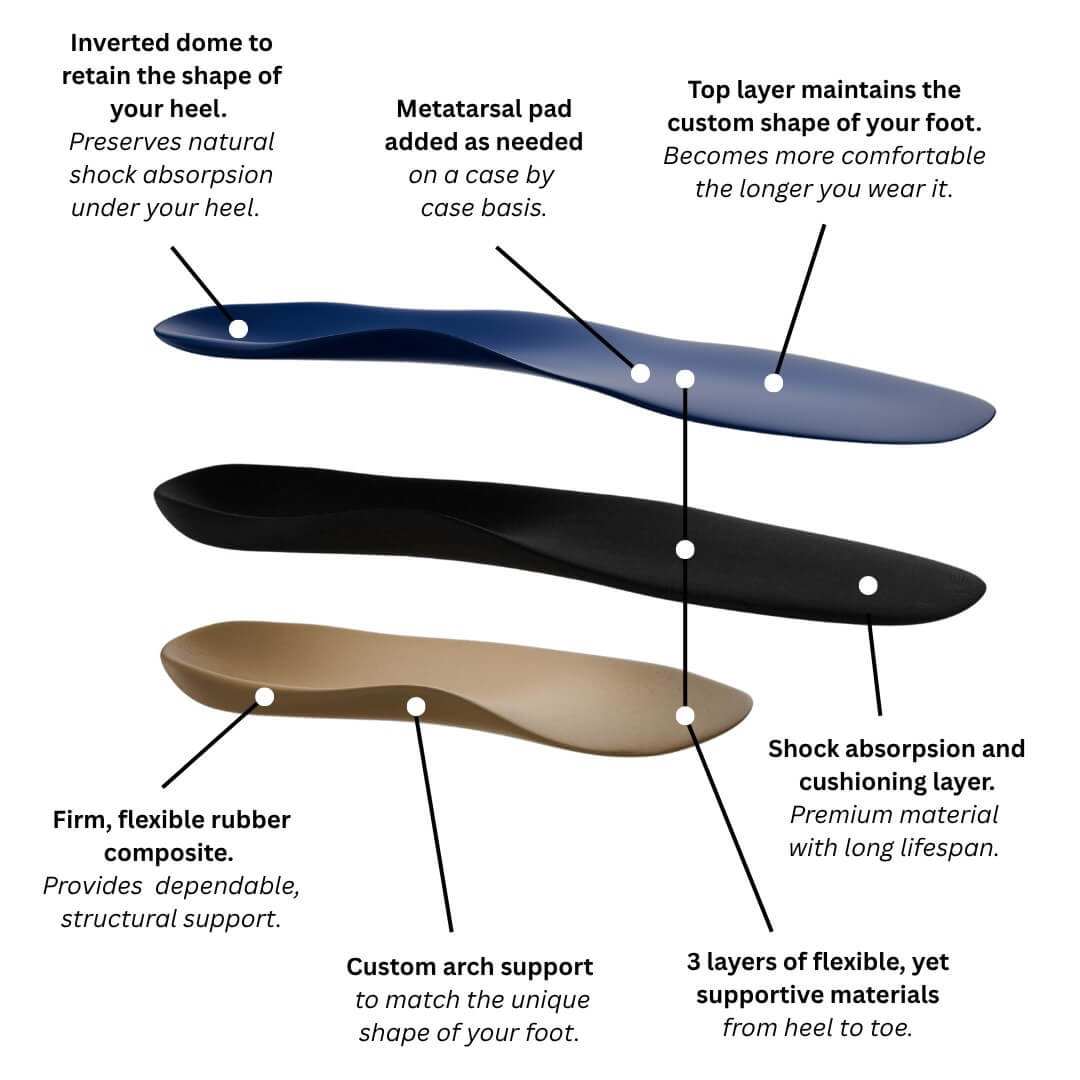What is Pronation?
Pronation is the natural inward roll of your foot with each step, helping absorb shock and maintain balance. A healthy amount of pronation allows for even impact distribution and efficient push-off while walking or running. However, when the foot rolls too much or too little, it can lead to biomechanical issues and chronic discomfort.
- Overpronation occurs when the foot rolls excessively inward, placing stress on the arch and inside of the foot. This often leads to the ankle collapsing inward and misalignment of the knees and hips. Overpronation is associated with flat feet or fallen arches and can contribute to plantar fasciitis, shin splints, knee pain, and Achilles tendonitis. It can also result from muscle imbalances, worn-out shoes, or improper gait mechanics.
- Underpronation (Supination) happens when the foot rolls outward instead of inward. This reduces shock absorption and places pressure on the outer edge of the foot and smaller toes. Supination is common in people with high arches and may lead to ankle sprains, stress fractures, or pain in the heels and balls of the feet. People with this condition typically wear down the outer soles of their shoes more quickly and may feel unstable during movement.


